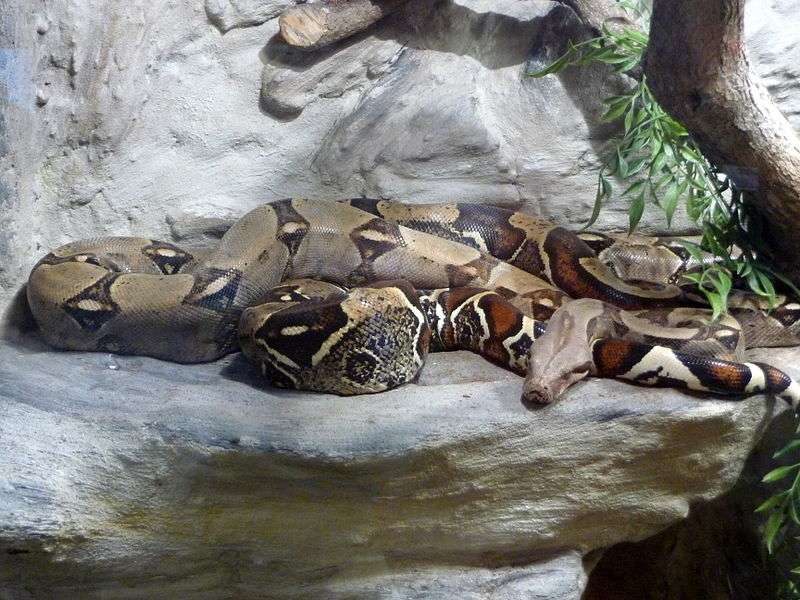
Description:
Scientific name: Boa constrictor
Life span: 35 or more years
The boa constrictor is a huge snake with a bulky body. The boa constrictor’s head is long and triangular, with two dark streaks running along the top and from the eyes to the rear of the jaw. The main coloring is a background of light brown and gray with deep brown and black markings, frequently in the form of triangles, ovals, and linked ovals.
Native Region/Habitat
Various South American countries north of 35°S, including Colombia, Ecuador, Peru, Venezuela, Trinidad and Tobago, Guyana, Suriname, French Guiana, Brazil, Bolivia, Uruguay, and Argentina, as well as numerous islands off the continent’s coasts, are home to different subspecies of the boa constrictor. B. constrictor thrives in a wide range of environmental settings, including arid semi desert land and tropical rainforests. Yet, due to the humidity, temperature, natural protection from predators, and plenty of potential prey, it likes to reside in rainforests. It is a very good swimmer, thus it is frequently seen in or near rivers and streams. Boa constrictors also occupy the burrows of medium-sized mammals, where they can hide from potential predators.
Behavior:
Unless they desire to mate, boa constrictors typically live alone and do not associate with any other snakes. Although they prefer the night, they will occasionally bask during the day if the nighttime temperatures are too low. Young boa constrictors, which are semi-arboreal snakes, may climb into trees and bushes to forage, but as they get bigger and heavier, they generally stay on the ground. When they sense a threat, boa constrictors bite. Even when delivered by huge snakes, their bite can be unpleasant but rarely poses a threat to people. When startled, Central American specimens hiss loudly and strike repeatedly, whereas South American specimens are more easily subdued.
Like all snakes, boa constrictors are more unpredictable during shed cycles because the lubricant between the old and new skin makes the snake’s eyes seem milky, blue, or opaque, making it more defensive than it would otherwise be.
Care As a pet/In captivity:
This species thrives in captivity and frequently turns out to be extremely gentle. Both zoos and private reptile collections frequently have it. They are frequently bred in captivity, despite the fact that they are still exported from their native South America in large numbers. Depending on the size and age of the individual, they are fed mice, rats, rabbits, chickens, and chicks when maintained in captivity. They require a long-term commitment as a pet because of their captive life expectancy of 20 to 30 years, with a few instances exceeding 40 years.

- Boa constrictors can be kept in huge aquariums when they are young and small, but as they get bigger, they need cages with at least 10 square feet of floor space. A large, mature boa constrictor should have adequate space in housing that is at least 6-8 feet long, 2-3 feet high, and 2-3 feet broad.
- These snakes enjoy environments with daytime temperatures between 82 and 90 degrees and nighttime temperatures between 78 and 85 degrees. These reptiles need a warmer basking area that is between 90 and 100 degrees to help them regulate their body temperatures. Nevertheless, you must be careful not to expose any heating equipment because boa constrictors are easily burned.
- The original tropical environments of boa constrictors are frequently quite humid, and the ideal humidity for a pet snake’s habitat is between 60 and 70 percent.
- These snakes devour their prey whole because they are carnivores. While larger, mature boas consume rats, rabbits, or even pigs, smaller snakes typically eat mice. To avoid choking or other digestive issues, the prey should not be bigger than the snake’s width at its midsection. Pre-killed prey is preferable over live prey because the latter can bite or scratch the snake, resulting in skin diseases or other wounds.
Table





